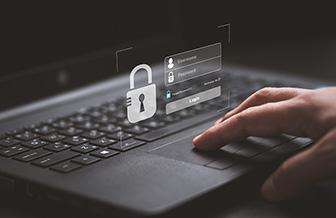Deepfake Awareness Protecting Yourself at Work and Home
Posted on Oct 03, 2025

What Are Deepfakes?
With the rise of artificial intelligence (AI), cybercriminals are finding new ways to manipulate trust. One concerning tactic is the use of deepfakes—AI-generated audio, video, or images that mimic a real person’s voice, appearance, or behavior. These synthetic imitations can be extremely convincing, making it easier for attackers to deceive their targets into sharing sensitive data or transferring funds.
How Do Deepfakes Work?
Attackers can feed AI tools with video clips, voice recordings, or written messages to train the model to replicate someone’s identity. The result? A fraudulent but realistic impersonation that can be used to impersonate executives, coworkers, or family members. These deepfakes are then used in social engineering schemes to trick people into taking harmful actions—such as clicking malicious links or disclosing confidential information.
What to Watch For
To avoid falling victim to deepfake-enabled scams, watch for these common red flags:
- Messages that create urgency or panic
- Requests sent at unusual times, such as late nights, weekends, or holidays
- Unusual requests that don’t match someone's normal behavior
- Tone or style that seems "off" or inconsistent
Always trust your instincts. If something doesn’t feel right—pause, verify, and don’t respond impulsively.
Best Practices for Verifying Identity
Here are simple, practical steps you can take to verify a person’s identity when something feels suspicious:
Use a second communication channel. Call or message the person using a known, trusted number—not the one provided in the suspicious message.
Ask specific questions. Have a quick back-and-forth conversation or use small talk to test for authenticity. Real people don’t follow scripts—AI often does.
Pause before acting. Rushing is what attackers count on. Giving yourself time can make all the difference.
Don’t Let AI Fool You
Social engineering, whether powered by AI or not, is designed to trick you into doing something you normally wouldn’t. Whether you're at home or at work, the rules are the same:
- If you wouldn’t do it in person, don’t do it online.
- There is no “safe zone” just because something feels familiar.
- Always verify before you trust.
By staying vigilant and cautious, you can protect yourself, your coworkers, and your personal information from the growing threat of AI-powered deception.
Does it seem suspicious, out of place, or just strange?
For more tips and tricks, check out the additional resources below:
• American Banking Association - Cybersecurity & Data Security | American Bankers Association / ABA Celebrates 150 Years – YouTube Channel
• Internet Complaint Center (IC3) - Press Releases - Internet Crime Complaint Center (IC3)
Was this helpful?
Thank you for the feedback








